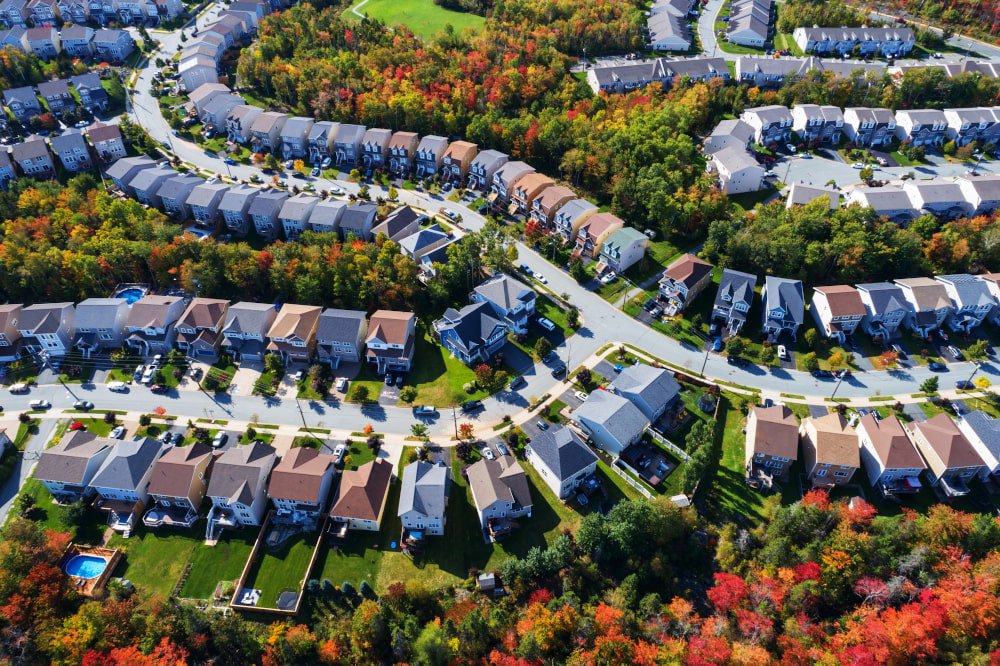What Is the Historical Appreciation of Real Estate in Canada?

The Canadian real estate market has evolved significantly over the past decades, shaped by economic, demographic, and policy changes. Understanding its history and future trends is essential for informed investment decisions.
Key Takeaways
- Market Evolution: Canada’s real estate market has transitioned from agricultural roots to urbanized growth, with recent demand surges in cities like Toronto and Vancouver.
- Regional Variations: Property appreciation rates vary, with metropolitan areas seeing rapid growth, while rural regions experience more modest increases.
- Influencing Factors: Economic stability, demographic shifts, and government policies play crucial roles in shaping real estate market dynamics.
- Investment Comparison: Real estate offers stable long-term returns compared to volatile assets like stocks but lacks the liquidity of other investments.
- Future Trends: Population growth, technological advancements, and government policies will continue to impact the market.
The Evolution of Canadian Real Estate Market
The Canadian real estate market may seem especially volatile in recent years, but the truth is, this market has been growing and changing since is very inception. While the growth of the Canadian real estate market dates back centuries, some of its most major changes have taken place in just the last few decades, starting in the latter half of the 20th century.
Around the inception of Canada’s commercialized real estate market, developments were tied to colonial expansion and the optimization of agricultural activities. As the country grew and progressed, urbanization became the dominating factor, propelling the growth of cities and suburbs during the industrial revolution.
Following World War II, Canada faced another period of significant expansion, especially within suburban areas. Cultural trends, government programs that encouraged homeownership, and improvements in the nation’s infrastructure and transportation systems, pushed homebuyers towards the classic, “white-picket fence,” nuclear family home — fuelling demand for sub-urban properties.
From 1990 to the early 2000s, the Canadian real estate market experienced further evolution, driven by modernization and globalization. Growing urban populations increased the need for high-density housing. Zoning reforms, commercial development, and the growth of the service sector, all played a role in the skyrocketing popularity of the condominium. The never-before-seen rates of high-density housing construction that took place during this era would permanently reshape the Toronto skyline.
In recent years, one of the greatest driving forces behind the rapid rise of housing prices has been the growth of major cities like Toronto and Vancouver. In fact, Canada has seen most of its population growth within major cities, with much of the nation, outside metropolitan centres, remaining sparsely populated to this day. Increased immigration , limited housing supply, and low pandemic interest rates have also contributed to an immense market boom, that drove prices to new highs around 2021, from which they have not yet significantly descended.
While the Canadian real estate market has seen remarkable growth over the course of its history, it has also faced a number of challenges. Currently, the biggest pain points are housing supply shortages, affordability constraints, and environmental sustainability concerns. Rising housing prices in major urban centres have especially raised concerns about housing accessibility, particularly for young families and low-income earners.
Variations in Appreciation Trends Across Canada
Appreciation trends vary quite significantly from region to region, with each pocket of the Canadian real estate market being influenced by different factors. Employment opportunities, migration trends, and population growth may all influence a region’s rate of appreciation — among other factors.
In metropolitan areas like Toronto, Vancouver, and Montreal, a limited supply of land and constructed homes, paired with growing migration trends and increasing demand, have historically led to substantial appreciation in home prices within these areas. Because these cities serve as economic hubs, they attract businesses, investors, and workers, driving up the city’s population, and thereby, driving up property values as well.
Conversely, rural and remote regions have historically experienced more modest appreciation rates. This might be due to a variety of different factors, but typically ties back to a fundamentally lower population growth rate — which may be based on the limited economic diversification of these areas. However, certain rural areas do benefit from niche markets or tourism, which may lead to a higher rate of appreciation.
Factors Influencing Long-Term Appreciation of Real Estate
Below are the three primary drivers shaping market dynamics:
- Economic stability. A stable economy strengthens investor confidence, as it often indicates a healthy demand for real estate assets. This is because strong job markets lead to an increase in worker populations, but also to an increase in purchasing power, which drive up housing demand—and thus—appreciation.
- Demographic trends. Population growth, migration patterns, and trends in household makeup (single-resident properties vs. family homes, etc.) can all significantly impact real estate markets. Urbanization, immigration, and generational shifts may also influence housing preferences and demand for residential properties.
- Government policies , such as taxation, zoning regulations, and interest rates, also play a pretty significant role. Measures to promote homeownership or stimulate construction can bolster or dampen appreciation rates.
How much does real estate appreciate per year on average in Canada?
On average, Canadian real estate appreciates at a rate of 5-7% annually. This growth rate varies depending on region, economic conditions, and market dynamics, reflecting the country's diverse real estate landscape.
Real Estate Appreciation vs. Stocks, Bonds, and Commodities
When deciding how to best build an investment portfolio , many Canadians struggle to decide between investing in physical assets, like real estate, and investing in more liquid assets, like stocks or bonds. Comparing real estate appreciation to other asset classes, like stocks or bonds, can be a great way to make a more informed decision on the matter.
Compared to stocks and commodities, real estate usually has a smaller chance of incredible gains, but also a smaller chance of losses, since it is a less volatile asset class. This can make property investment a very attractive option for risk-averse investors looking to see stable returns over a long-term horizon. Real estate can also serve as a hedge against inflation, since property values tend to appreciate alongside rising prices.
While the stability of real estate can be quite enticing, it is also important to remember its illiquidity. Assets like stocks and bonds are very liquid, meaning they can easily be bought and sold at will. Real estate assets are much more difficult to buy and sell, and the process of doing so often involves incurring extra fees. Moreover, real estate markets are inherently local, subject to regional economic conditions and regulatory frameworks, whereas stocks and bonds operate within broader, global markets.
Striking a balance between real estate and traditional asset classes can optimize your portfolio performance, and reduce your overall risk exposure. The ideal strategy, of course, will heavily depend on your individual investment goals and risk tolerance levels.
Forecasting Future Trends
While it is impossible to truly forecast future trends in the Canadian real estate market, conducting a comprehensive analysis of macroeconomic indicators, demographic projections, and market dynamics provides us with two major predictions:
- Population growth and demographic shifts will continue to shape housing demand, with urban centres and regions offering job opportunities and amenities experiencing the most significant appreciation. Technological advancements, such as remote work capabilities and sustainable building practices, may influence housing preferences and development patterns.
- Government policies, particularly those addressing affordability, housing supply, and environmental sustainability, will play a critical role in shaping future market conditions. Interest rate fluctuations, geopolitical events, and global economic trends will also impact investor sentiment and market performance.
Overall, the historical appreciation of real estate in Canada reflects a complex interplay of economic, demographic, and regulatory factors. Understanding the evolution of the market, and key drivers of long-term appreciation across a variety of regions, is an essential step towards making informed decision-making. To learn more about the current state of the market, and how to best navigate future real estate investments, contact Clover Mortgage today to schedule a free one-on-one consultation with one of our expert brokers.
FAQ
How much does real estate appreciate per year on average in Canada?
In Canada, the average real estate appreciation over the past 30 years, has been around 5-7% annually.
What is the historical rate of return for real estate in Canada?
According to the Canadian Real Estate Association (CREA), the average annual rate of return has been around 7-10% for residential properties, and 8-12% for commercial properties, over the past few decades.
What's been the appreciation of Toronto homes over the last 10 years?
Over the last 10 years, the average price of a Toronto home has increased by approximately 117%, or just over $600,000 CAD.





